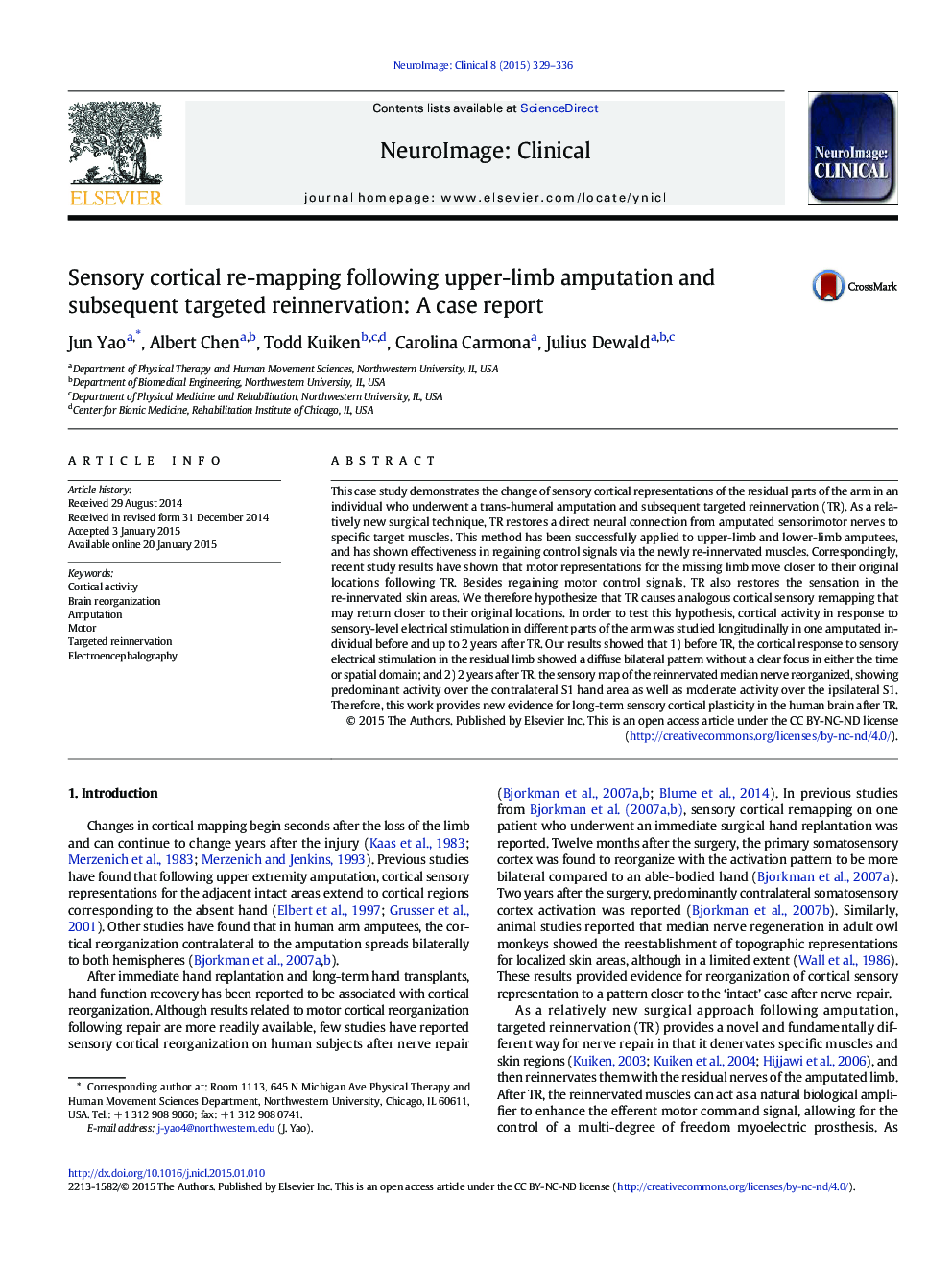| کد مقاله | کد نشریه | سال انتشار | مقاله انگلیسی | نسخه تمام متن |
|---|---|---|---|---|
| 3075011 | 1580959 | 2015 | 8 صفحه PDF | دانلود رایگان |
• We studied sensory cortical mapping before and after targeted reinnervation (TR).
• EEG was recorded when stimulating the intact finger and the residual nerve.
• The experiment was repeated longitudinally through 2 years in a single subject.
• The missing finger representation changed back to a more normal pattern post-TR.
• Neural mechanisms underlying TR-induced sensory cortical remapping are discussed.
This case study demonstrates the change of sensory cortical representations of the residual parts of the arm in an individual who underwent a trans-humeral amputation and subsequent targeted reinnervation (TR). As a relatively new surgical technique, TR restores a direct neural connection from amputated sensorimotor nerves to specific target muscles. This method has been successfully applied to upper-limb and lower-limb amputees, and has shown effectiveness in regaining control signals via the newly re-innervated muscles. Correspondingly, recent study results have shown that motor representations for the missing limb move closer to their original locations following TR. Besides regaining motor control signals, TR also restores the sensation in the re-innervated skin areas. We therefore hypothesize that TR causes analogous cortical sensory remapping that may return closer to their original locations. In order to test this hypothesis, cortical activity in response to sensory-level electrical stimulation in different parts of the arm was studied longitudinally in one amputated individual before and up to 2 years after TR. Our results showed that 1) before TR, the cortical response to sensory electrical stimulation in the residual limb showed a diffuse bilateral pattern without a clear focus in either the time or spatial domain; and 2) 2 years after TR, the sensory map of the reinnervated median nerve reorganized, showing predominant activity over the contralateral S1 hand area as well as moderate activity over the ipsilateral S1. Therefore, this work provides new evidence for long-term sensory cortical plasticity in the human brain after TR.
Journal: NeuroImage: Clinical - Volume 8, 2015, Pages 329–336
